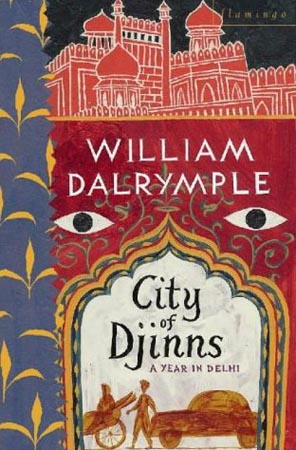City of Djinns
Synopsis
Watched over and protected by the mischievous, invisible djinns, Delhi has, through their good offices, been saved from destruction many times over the centuries. With an extraordinary array of characters, from elusive eunuchs to the last remnants of the Raj, Dalrymple’s second book is a unique and dazzling feat of research. Over the course of a year he comes to know the bewildering city intimately, and brilliantly conveys its magical nature, peeling back successive layers of history, and interlacing innumerable stories from Delhi’s past and present.
Alive with the mayhem of the present and sparkling with William Dalrymple’s irrepressible wit, City of Djinns is a fascinating portrait of a city.
Editions

- Format: paperback
- Publication Date: 20 September 1993
- Publisher: HarperCollins
- ISBN: 978-0006375951
- Buy Now
Reviews and Quotes
- Jan Morris, Independent
- “Dalrymple has pulled it off again … in it we see the first fine rapture of In Xanadu deepening into a profounder dedication.”
- Trevor Fishlock, Sunday Telegraph
- “There are beautifully chiselled descriptions of a grand capital… but much of the book’s strength lies in Dalrymple’s skill in peeling the historical onion and showing how the New Delhi resonates with the old… A splendid tapestry.”
- Nicholas Wordsworth, Financial Times
- “A sympathetic and engaging portrait of this age old city… Pursuing his research through the narrow alleys, mosques, abandoned ruins and tombs of Delhi, Dalrymple encounters a range of folk who continues to give it its special character. Pigeon fanciers, Sufi mystics, Muslim healers, musicians, calligraphers, philosophers and a guild of eunuchs all provide Dalrymple with entertaining insights… It is fine, entertaining, well written stuff, thoroughly researched but with none of the stern academic tone that so many historical profiles adopt. What sustains it, apart from his erudite knowledge, is Dalrymple’s sense of historical adventure. Just open your eyes, he says. If you know how to look, even the abandoned ruins of the past are alive.”